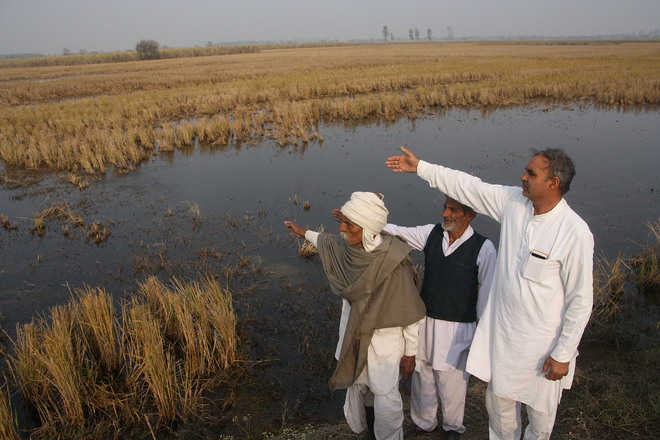10% cultivable land going waste
Parveen Arora
Tribune News Service
Karnal, January 6
Almost 10 per cent of cultivable land in Haryana is going waste because of salinity and alkalinity, which is wreaking havoc by rendering fertile land non-productive.
Farmers of north, west and central Haryana, including Ambala, Bhiwani, Fatehabad, Kaithal, Karnal, Kurukshetra, Jind, Jhajjar, Sirsa and Sonepat, are worried about the alkalinity problem in their soil. Meanwhile, the issue of salinity prevails in the soil of central, southern and western parts of Haryana, including Bhiwani, Fatehabad, Gurugram, Jind, Mewat, Rewari, Rohtak, Sirsa, Sonepat and Palwal, reducing the size of cultivated land.
As per data, around 33 lakh hectare cultivated land is in Haryana. In kharif season, 29-30 lakh hectare is cultivated, while in Rabi season, 32-33 lakh hectare land is cultivated. The problem of salinity and alkalinity prevails on around 3.15 lakh hectare, which needs reclamation to attain potential yield.
Of the 3.15 lakh hectare, 1,45,054 hectare is saline, having predominant salts of chlorides and sulphates of sodium, calcium and magnesium, while 1,70,563 hectare is alkaline (sodic) which has predominant salts of carbonates and bicarbonates of sodium.
The recurrent waterlogging in various districts is contributing to salinity and the increasing area under saline soil is worrying the scientific community, farmers and the state government.
As per the data, around 90,000 hectare was affected with salinity during 1990s, which has increased to 1.45 lakh now. Surprisingly, only 12,000 hectare has been reclaimed so far.
The situation of alkaline-affected land is a little better as it was around 3.5 lakh hectare earlier, of which around 1.8 lakh hectare has been reclaimed, while the work on the remaining 1.7 lakh hectare is going on.
“Farmers are facing problem of sodic soil in various villages of Assandh block, resulting in less yield. A number of farmers are still not aware about the reclamation methods, resulting in extra burden on them,” Sher Singh, a farmer of Assandh block, said.
Rohtash, a farmer from Badopal in Fatehabad, said the excessive salinity in the soil was leading to losses.
RK Yadav, head of Division of Soil and Crop Management, Central Soil Salinity Research Institute, said “With the help of gypsum, we reclaimed soil from alkalinity. Now, the institute is working on developing alternate amendments for saline soil reclamation. We are using by-products from sugar mills, like press mud, gypsum-enriched solid waste, compost and phospho-gypsum, for reclaiming sodic soil”.
Farmers could reduce around 50 per cent of gypsum, substituting it with 5 tonne per hectare of press mud. Only surface drainage was a solution for the reclamation of waterlogged saline soil, he added.









